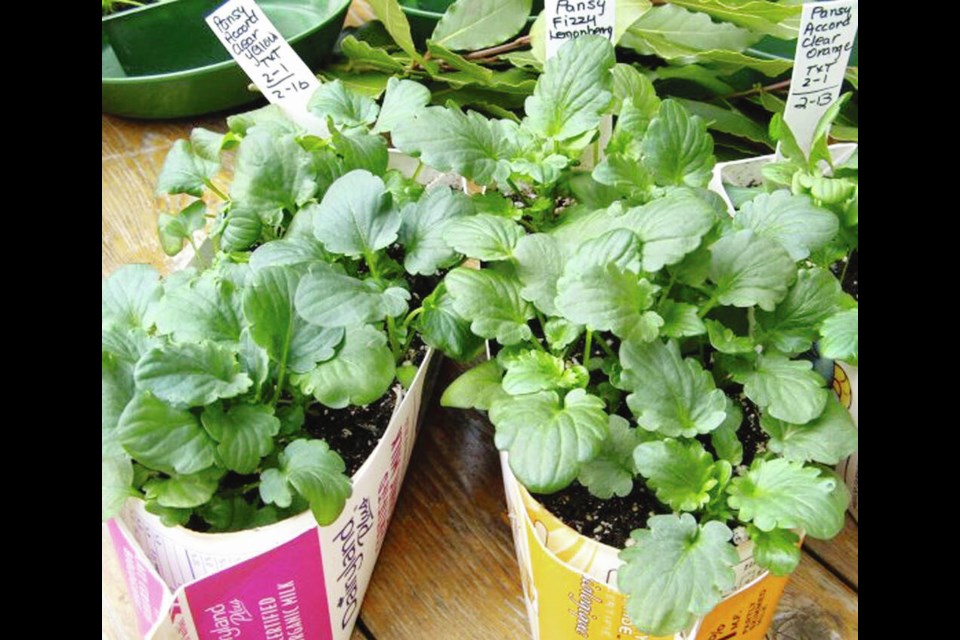Recent weeks of observing wildlife activity in the garden and mulling over questions from readers have brought me to this conclusion: Both Nature’s feathered creatures and gardeners are being tricked and confused by wildly fluctuating weather, described in a ÎÚÑ»´«Ã½ article as “moody.”
Last month the trees and bushes around the house became prematurely alive with bird activity. One morning, I left a door open for a few moments while I was bringing in wood. When I settled back down to work in the office, I began hearing soft knocking sounds from the kitchen. Then a tiny dark creature began flying back and forth between kitchen and family room.
Opening the patio door failed to entice the wee bird to make a flight to freedom. I decided to leave it to settle at some point, hoping I’d be able to trap and free it.
When I did creep out of the office to check, there it was — a completely still, perfectly spherical ball of dark grey fluff perched on the mantel over the wood stove. The open door offered no enticement, and the tiny bird ended up flying between the large dining room and living room windows, perching on house plants. Finally, I managed to open the living room window without scaring the bird off, and it flew out.
It seemed early for baby birds, but then I began hearing reports of animals coming out of hibernation early, and various birds showing up far earlier than usual at different location on the Island. Apparently the warm weather months lured wildlife into spring mode.
A question of timing. The warmth of December and early January lulled many of us into believing a smooth path to an early spring lay ahead. That path turned out to be erratic. The deep freeze of around mid-January was a shock. Buds on some shrubs and trees had already begun swelling
Like the beasts and birds around us, gardeners too were prompted by the warmth of February to emerge early out of winter “hibernation” from earthy pursuits. I’ve been hearing form gardeners with seedlings already crowded and tall in their pots while freezing conditions prevailed.
I’m not immune to getting an early start on the season, but because uncertain weather can pretty much be counted on, I try to practise caution and patience.
I start indoors early only items that I know will “hold” well in good condition if transplanting is delayed by weather. These include onions, leeks, pansies and violas. And I use seeding containers that are roomy enough to allow seedlings to develop well. My containers are nine cm deep.
Plan to seed as many things directly into the garden, reserving indoor sowing for long-term plans like tomatoes and peppers. Read seed packet and catalogue directions carefully for best planting practices.
Use waiting time to prepare planting sites with compost, fertilizer, and lime (except for potatoes). Cover prepared areas with leaves or straw, and when air and soil temperatures are congenial for a seeding or transplanting, you’re all set to uncover the soil and plant.
Green thoughts. A relative who lives in an apartment building in a rather impoverished neighbourhood often sends me photos of the communal garden at the centre of the complex, where residents have the option of using a raised bed to grow vegetables and/or flowers.
During his time living in the building, the garden has grown into a place of order and beauty s well as a source of fresh food. In summer, residents savour raspberries growing in communal beds. Admiring visitors have volunteered funds to erect arbours for shade and seating to encourage relaxed socializing. The garden continues to contribute significantly to the social, physical and mental health of the residents.
What a blessing it would be to have such gardening spaces in more multidwelling units. Happy St. Patrick’s Day tomorrow.
GARDEN EVENT
Qualicum meeting. The Qualicum Beach Garden Club will meet on Monday, March 18, at 7:30 p.m. in the QB Civic Centre, 747 Jones St. Carlos Moniz, director of horticulture at The Butchart Gardens, will present “A behind the scenes look at creating The Butchart Gardens amazing floral displays.” A visual tour will reveal the intricate process of preparing spring and summer displays. .



